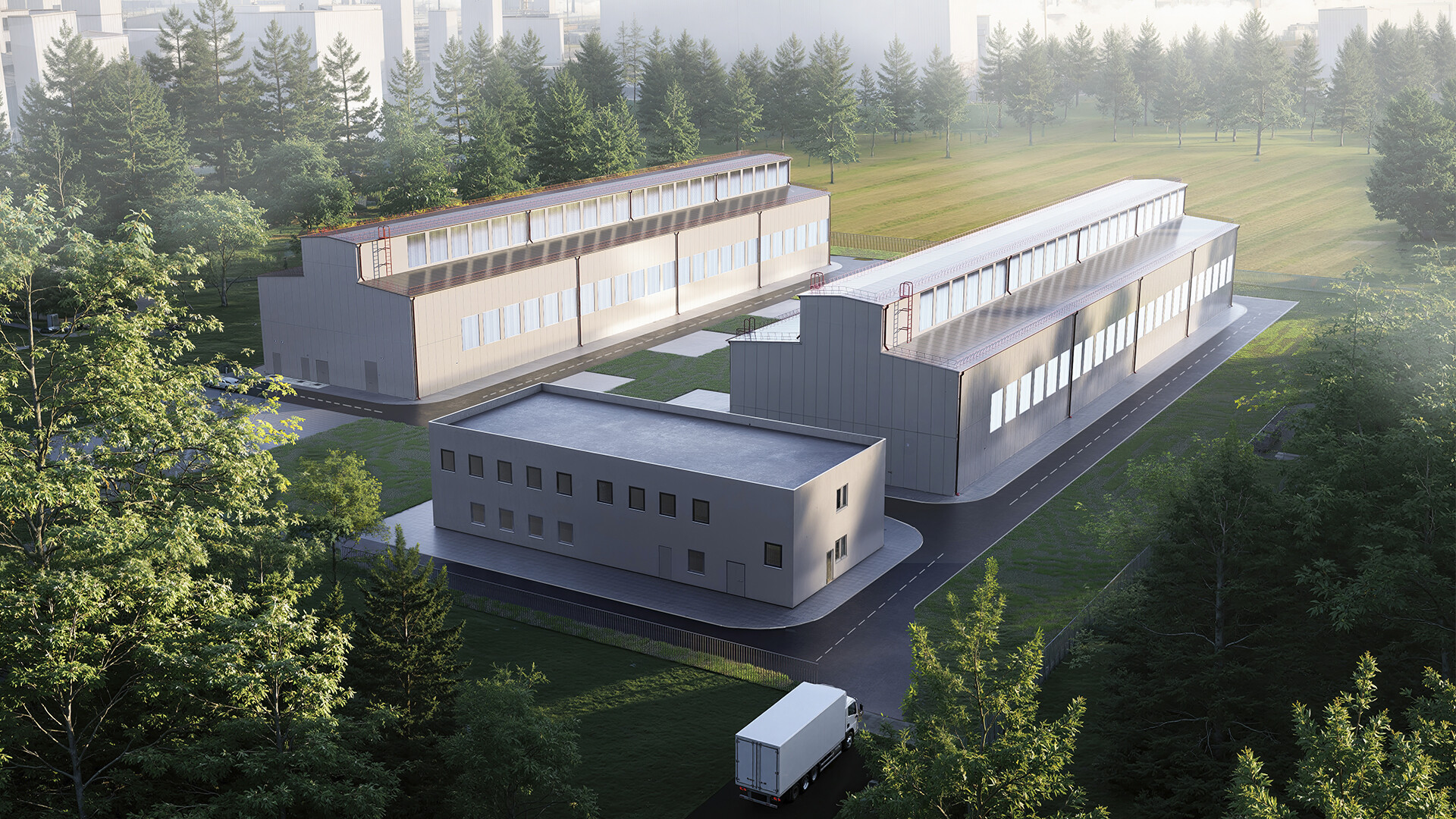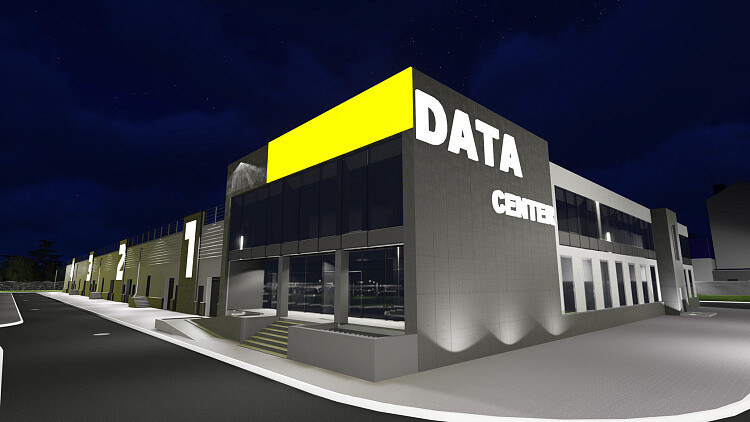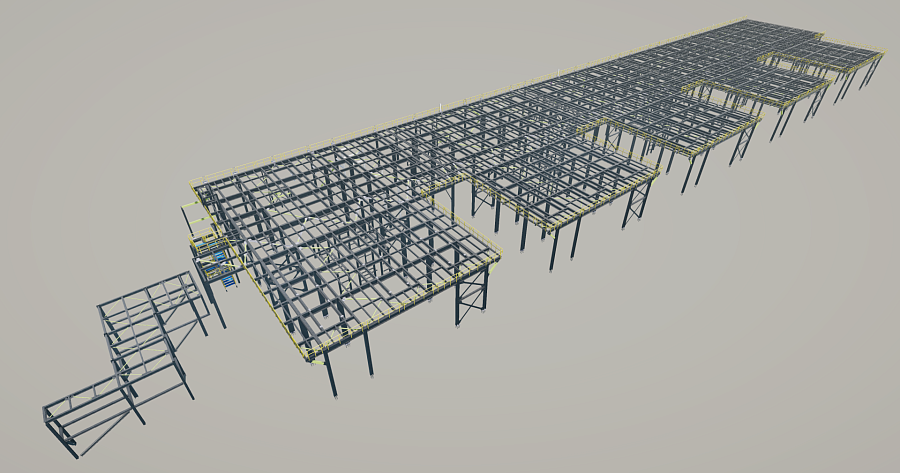Data centres
Data center project requires a deep understanding of the critical factors influencing its performance and longevity. These include: power infrastructure (uninterruptible power supplies, generators), cooling systems (CRAC, CRAH units, liquid cooling), network infrastructure (high-bandwidth connectivity, robust network security), physical security (access control, surveillance, perimeter protection), and environmental considerations (energy efficiency, sustainability). We focus on ensuring compliance with relevant industry standards and regulations.
Our architects, engineers and specialists provide integrated data centre design solutions to our clients. We may incorporate advanced technologies such as AI-driven monitoring and predictive maintenance to optimize operational efficiency and minimize downtime.
Our Data Centre Design Services:


Key Factors Influencing Data Centres Design
Designing a data centre involves more than choosing hardware. It requires a strategic approach to site, power, cooling, and compliance.
Site Selection and Location Strategy
Selecting the right location is pivotal. Ideal sites have stable climates, low disaster risk, strong power grids, and reliable fiber connectivity. Many global companies are now moving data centres to cooler climates or underwater environments to reduce cooling demands.
Cooling Systems and Thermal Management
Cooling consumes up to 40% of a data centre’s total power. Efficient thermal management—through liquid cooling, free-air cooling, or advanced containment—ensures optimal temperature control. Innovations like immersion cooling are redefining how heat is managed in hyperscale facilities.
Power Distribution and Redundancy
To maintain uptime, data centres rely on redundant power systems - UPS, generators, and dual power feeds.
Network Infrastructure and Connectivity
The network design determines performance. High-speed switching, structured cabling, and fiber-optic connectivity provide low-latency and high-bandwidth communication. Redundant network paths safeguard against outages, ensuring resilience.
A data centre’s strength lies in its structure. The primary elements include servers, networking equipment, storage units, and environmental systems. Together, these components create a unified environment that processes data, supports cloud services, and powers mission-critical applications.
The Role of Architecture in Data Centre Design
Architectural layout influences airflow, cabling, scalability, and energy efficiency. Modern designs emphasize modular architectures, allowing expansion without major disruptions. Raised floors, optimized rack placement, and hot/cold aisle containment systems are integral to minimizing energy waste and maximizing operational uptime.
FAQs About Data Centres Design
1. What is data centre design?
It’s the process of planning and structuring facilities that house IT equipment to ensure optimal performance, efficiency, and security.
2. Why is data centre design important?
Proper design minimizes downtime, reduces energy costs, and ensures scalable performance.
3. What are the main components of a data centre?
Servers, networking equipment, storage, cooling, power systems, and security infrastructure.
4. What does PUE mean in data centres?
Power Usage Effectiveness measures energy efficiency. A lower PUE indicates better performance.
5. How can data centres become more sustainable?
Through renewable energy use, efficient cooling systems, and intelligent automation.
6. What’s the future of data centre design?
AI integration, edge computing, and advanced liquid cooling will dominate the next decade.


Key Factors Influencing Data Centres Design
Designing a data centre involves more than choosing hardware. It requires a strategic approach to site, power, cooling, and compliance.
Site Selection and Location Strategy
Selecting the right location is pivotal. Ideal sites have stable climates, low disaster risk, strong power grids, and reliable fiber connectivity. Many global companies are now moving data centres to cooler climates or underwater environments to reduce cooling demands.
Cooling Systems and Thermal Management
Cooling consumes up to 40% of a data centre’s total power. Efficient thermal management—through liquid cooling, free-air cooling, or advanced containment—ensures optimal temperature control. Innovations like immersion cooling are redefining how heat is managed in hyperscale facilities.
Power Distribution and Redundancy
To maintain uptime, data centres rely on redundant power systems - UPS, generators, and dual power feeds.
Network Infrastructure and ConnectivityThe network design determines performance. High-speed switching, structured cabling, and fiber-optic connectivity provide low-latency and high-bandwidth communication. Redundant network paths safeguard against outages, ensuring resilience.
A data centre’s strength lies in its structure. The primary elements include servers, networking equipment, storage units, and environmental systems. Together, these components create a unified environment that processes data, supports cloud services, and powers mission-critical applications.The Role of Architecture in Data Centre Design
Architectural layout influences airflow, cabling, scalability, and energy efficiency. Modern designs emphasize modular architectures, allowing expansion without major disruptions. Raised floors, optimized rack placement, and hot/cold aisle containment systems are integral to minimizing energy waste and maximizing operational uptime.
FAQs About Data Centres Design
1. What is data centre design?
It’s the process of planning and structuring facilities that house IT equipment to ensure optimal performance, efficiency, and security.
2. Why is data centre design important?
Proper design minimizes downtime, reduces energy costs, and ensures scalable performance.
3. What are the main components of a data centre?
Servers, networking equipment, storage, cooling, power systems, and security infrastructure.
4. What does PUE mean in data centres?
Power Usage Effectiveness measures energy efficiency. A lower PUE indicates better performance.
5. How can data centres become more sustainable?
Through renewable energy use, efficient cooling systems, and intelligent automation.
6. What’s the future of data centre design?
AI integration, edge computing, and advanced liquid cooling will dominate the next decade.







